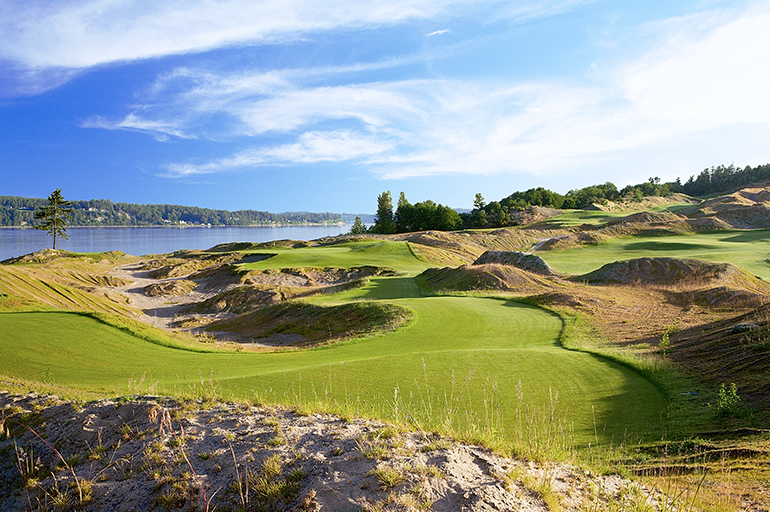
Courses That Put the Green Back in Golf: Chambers Bay
The game is more sustainable than it has ever been
The major trend in golf courses these days is a more natural experience. Sure, golfers and course superintendents still want emerald fairways and obsessively tended putting greens. But the more natural the course, the closer the experience is to nature and the more satisfying.
Hundreds of golf facilities across the U.S. are designated as sanctuaries. They limit pesticides, enhance habitats and institute green initiatives such as solar-powered carts and geothermal clubhouses. Many reclaim water, use the natural environment and promote eco-friendly practices to players. That’s a seismic change from the designs and constructions of the post-World War II building boom.
“My grandfather was often called the father of modern golf course architecture,” says Trent Jones, referring to Robert Trent Jones, an English–American golf course architect who is credited with designing or redesigning more than 500 golf courses. “During World War II, bulldozers and heavy machinery were improved. He brought those into course design.”
Courses were carved out of and into landscapes, with well-tended playing areas and roughs; they were maintained with chemicals and earth damaging practices. “Now we’ve come full circle to the Scotland idea of leaving the environment alone,” Jones says. Today, a new generation of minimalist architects has emerged whose courses fit within existing environments.
Chambers Bay; Tacoma, Wash.
Tacoma’s links-style layout converts a sand and gravel mine into a spectacular venue modeled on Scottish traditions, which connect scrub-lined holes along the coast, built on sandy soil and typically treeless. Links courses are typically buffeted by strong winds and rain. “The land was earmarked for reclamation,” says Trent Jones, a golf architect, whose father, Robert Trent Jones Jr., designed it in 2006. “We could turn it into a public park, but what if we also brought a golf course here and used it to treat waste water and generate revenue?”
The design was so successful, Chambers Bay hosted the 2015 U.S. Open Tournament, with Puget Sound, Mount Rainier and the Olympic Mountains as its backdrop — the youngest course ever to host the event.
As with many Scottish links, public jogging trails and walking paths meander through the course. “Our challenge was to make paths without errant golf balls hitting people,” Jones says. They made dunes out of sand leftover from the mine. “We modeled the wind patterns to see how wind and rain would have created dunes,” he says.
Eco-practices
The fescue turf is the driving force behind the ecosystem at Chambers Bay, says Eric Johnson, director of agronomy. “It has a lower requirement for water, fertilizers and pesticides,” he says of the deep-rooted grass that’s native to the British Isles.
Additionally, the water treatment plant on the property converts biosolid wastes — nutrient-rich organic matter from sewage treatment — into fertilizer that’s used around the course. And because the 950-acre Chambers Bay is a walking-only facility, the energy and maintenance needs of golf carts are eliminated.


